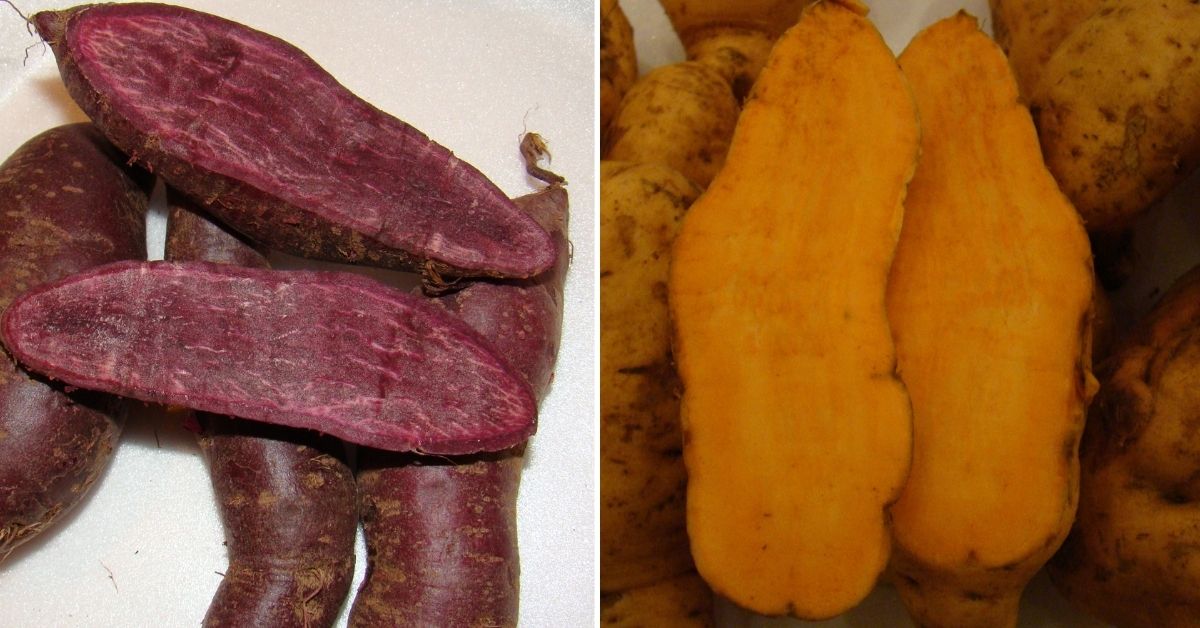Sweet potatoes, which are a type of root crop grown in subtropical regions, have a host of health benefits. Dr Nedunchezhiyan Maniyam, the principal scientist at the Indian Council of Agriculture Research (ICAR) — Central Tuber Crops Research Institute (CTCRI) in Bhubaneshwar, says, “The vegetable is rich in nutrition. If eaten for breakfast, it can provide energy to work until the evenings, especially for those who toil in fields. This is owing to the low glycemic index which causes the insulin to mix with the bloodstream slowly.”
In India, these crops are widely grown in hilly or tribal areas of the country’s eastern parts, as weather conditions here are suitable for tuber growth.
“In Odisha, sweet potatoes are grown across 40,000 hectares of land,” Dr Nedunchezhiyan says.

Low glycemic index in these vegetables helps control sugar levels. This means that sweet potatoes can be regularly consumed by people with diabetes in limited quantities.
To further enhance the benefits offered by this root vegetable, in 2016, Dr Nedunchezhiyan, along with other researchers at the institute, developed and launched two new varieties of sweet potatoes — Krishna (Purple colour) and Sona (Orange colour). These varieties are rich in anthocyanin and beta carotene, he says.

“These varieties were already popular in countries like the USA and Mexico. However they were rarely grown in India, as they needed to be modified to grow in our climate or soil conditions,” says Dr Nedunchezhiyan, adding that the purple variety has the potential to fight free radicals in the body which cause cancer.
Nine years of research
In 2007, a few cuttings of purple and orange sweet potatoes were brought to the research institute from a country where they were already being grown. The researchers studied the vegetable’s properties and started testing its growth pattern in Indian soil and climate.
“We planted the purple and orange sweet potato spuds on our institute’s 50-acre land and waited for three months to check for tuber growth. They were planted in fertile red soil during September-October. Because of Bhubaneswar’s weather, the plants grew well. However, there was growth only in the upper part (leafy portion) of the plant. Under the surface, the tuber growth was poor,” says Dr Nedunchezhiyan.
This was because the soil was too tight, and needed to be loose for aeration. In the following years, the researchers used the saplings grown on their land, genetically improved them to suit Indian conditions, and re-planted them.
Once the crop was growing well in the soil and the tubers produced were of good quality and quantity, cuttings were sent to other ICAR tuber research institutions in Tamil Nadu, Kerala, and other states to check their growth in other regions.
“While I head the operations in other states, the cultivation takes place based on pre-mediated conditions. This includes soil preparation, planting methods, maintenance of weather conditions, and more,” says Dr Nedunchezhiyan.
Once the crop became a success, the team conducted lab-level tests to determine the health benefits it offers. The purple sweet potato contains 90-100 milligram of anthocyanin for every 100 grams. This pigment is rich in antioxidants which are known to have anti-cancer properties and reduce blood sugar levels.

The orange variety has 14 milligrams of beta carotene for every 100 gram of the vegetable and is rich in vitamin A. According to the scientist, consuming orange sweet potatoes is equivalent to eating carrots.
Growing 150 tonnes of coloured sweet potatoes
In 2016, the team finalised their two varieties and officially launched them to be grown across the country.
“Initially, we did not have many takers for the crop owing to lack of awareness. However, in 2019, we were approached by farmers in Odisha, Karnataka and Tamil Nadu to grow these crops,” says Dr Nedunchezhiyan, adding that while tribal families were given the crop initially, they did not carry forward the cultivation because there were no buyers for the produce.
Since there is a lack of awareness among consumers in rural areas about the benefits of purple and orange sweet potatoes, the farmers could not sell enough nor expand the growth of these. Moreover, they did not have storage or transportation facilities to bring these crops to cities.
However, in 2020, the institute was approached by Mati Farms, Odisha, which partners with local farmers to grow a variety of seasonal produce. The farm is also involved in cultivating purple and orange sweet potatoes, distributing them across India to consumers, and making value-added products such as pickles, jams, chips, and more.
Sanjog Sahu, the founder of Mati Farms says, “We were able to cultivate over 20 tonnes of the sweet potatoes and have distributed them to businesses and individuals across various cities in India including Chennai and Bengaluru. This year, we have expanded our production and are expecting an output of 150 tonnes. While some would be sold fresh to consumers, others will be made into value-added products.”
If you wish to know more about the coloured sweet potatoes, you can email Dr Nedunchezhiyan – mnedun@gmail.com. If you wish to purchase the fresh produce, visit Mati Farms’ website.
Edited by Divya Sethu
No comments:
Post a Comment